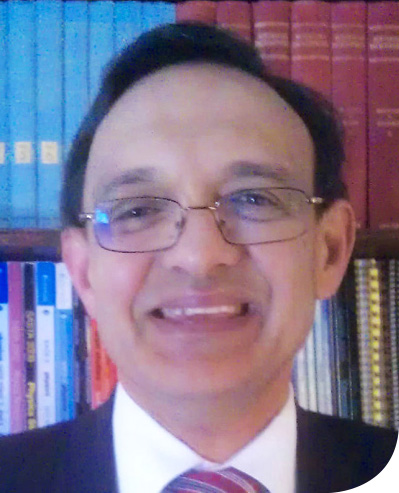Religious freedom and knives in school
A debate over the extent of religious freedom laws has arisen in NSW after an incident at a school where one student was stabbed by another, who was wielding a “kirpan”, a religious symbol in the form of a dagger worn by Sikhs. Politicians have expressed surprise that knives are allowed at schools at all, and there has been an announcement on Tuesday 18 May that from Wednesday 19 May there will be a ban implemented. It seems worthwhile to discuss the legal issues.
The requirement for baptised members of the Sikh faith to wear a kirpan, a ceremonial dagger, has been the subject of religious freedom decisions in other jurisidictions. In Canada, the decision of the Supreme Court of Canada in Multani v. Commission scolaire Marguerite-Bourgeoys [2006] 1 SCR 256 held that a Sikh boy should be allowed to wear a metal kirpan to school under appropriate conditions (in a case where there was no evidence of any previous acts of violence involving the kirpan). In the United States, in Tagore v. US, 735 F. 3d 324 (Court of Appeals, 5th Circuit, 2013) a US Federal District Court of Appeals ruled that the Religious Freedom Restoration Act protected an employee’s right to wear a kirpan with appropriate limitations.
In these cases the issues are sharpened because both Canada and the US have explicit protection for religious freedom, which requires a sensible accommodation of such freedom where it can be appropriately balanced with the rights of others. In NSW, however, the resolution of this issue depends very much on government discretion.
The NSW Summary Offences Act 1988, s 11C, generally bans knives in public places or at schools. But under s 11C(2)
(2) Without limitation, it is a reasonable excuse for the purposes of this section for a person to have custody of a knife, if:
(a) the custody is reasonably necessary in all the circumstances for any of the following:..
(vii) genuine religious purposes
This provides clear protection for those for whom wearing a knife to school would be a genuine religious purposes, and there is no doubt that the Sikh religion would provide such a reason. However, under s 11C(6):
(6) The regulations may provide that this section does not apply to or in relation to any specified class or description of knife.
Does this give the Government the power, by enacting a regulation, to limit the protection given by s 11C(2)(a)(vii) to kirpans? In my view, probably not. On its face the grant of power under the regulations is to provide that “the section” does not apply to certain types of knives. The most obvious way of reading that is a power to disapply the whole section, so that certain types of knives are permitted. It does not seem to grant the power to disapply specific protections under s 11C(2).
The NSW Parliament can amend this law, of course, to deal with situation. But that will take some time, and for the reasons noted, it is a little unclear whether the Government has the power by regulation to make wearing kirpans at schools illegal. Does the Department of Education, then, have the power to direct schools not to allow such objects? The Summary Offences Act provides an exception to the offence under s 11C(1) for religious knives; but arguably this still allows the Education Department to make its own guidelines for schools under its control (even if a breach of those guidelines would not amount to illegality). (I hasten to add that of course any actual act of violence perpetrated by a kirpan, if that is what happened here, would be illegal and could be dealt with by the usual criminal processes. But the question is whether a blanket ban on even wearing one can be defended.)
The Minister of Education has been quoted today saying:
“In the interim I’ve also asked the department to send advice out to our schools today updating our policy to say that knives for religious purposes will be banned in government schools,” she told Sydney radio 2GB on Tuesd
Could such a direction by the Department be challenged on the grounds of religious freedom or religious discrimination? There is no general protection for these rights in NSW at the moment. However, members of the Sikh religion are in the slightly anomalous position that they are probably protected against racial discrimination under the Anti-Discrimination Act1977 (NSW), where under s 4 “race” is defined to include “ethno-religious origin”. It has been generally thought that this will cover the Sikh faith- see Ekermawi v Nine Network Australia Pty Limited [2019] NSWCATAD 29 (15 February 2019) where the issues are discussed, and reference is made to the UK decision in Mandla v Dowell Lee [1982] UKHL 7; (1983) 2 AC 548 at 564 where Sikhs were regarded as protected under UK racial discrimination law.
Could it be argued, then, that a ban on religious objects worn by Sikh adherents amounted to racial discrimination? There are, broadly speaking, two types of racial discrimination under the NSW Act, s 7. One is “direct” discrimination, which would probably not apply here if there was a general directive that “no knives may be brought to schools for religious purposes”. Such a direction would not generally single out Sikhs. Another possible form of discrimination is “indirect” discrimination under s 7(1)(c): where someone
requires the aggrieved person to comply with a requirement or condition with which a substantially higher proportion of persons not of that race, or who have a relative or associate not of that race, comply or are able to comply, being a requirement which is not reasonable having regard to the circumstances of the case and with which the aggrieved person does not or is not able to comply.
To apply a “no religious knives” rule would arguably impose a “requirement or condition” which would be especially onerous for Sikh students. But in that case there would be a defence that the requirement was “reasonable having regard to the circumstances of the case“, which would involve protecting other students against possible knife attacks. This would seem to be a convincing argument to say that any rule forbidding religious knives would not be discriminatory.
The episode demonstrates that there ought to be a clearer framework for protection of religious freedom in NSW. The importance of this issue for the Sikh community means that there should be careful consideration of rules that are the least restrictive possible consistent with protection of the safety of pupils and teachers in schools. Hopefully further discussions in the future can come up with a workable solution.




